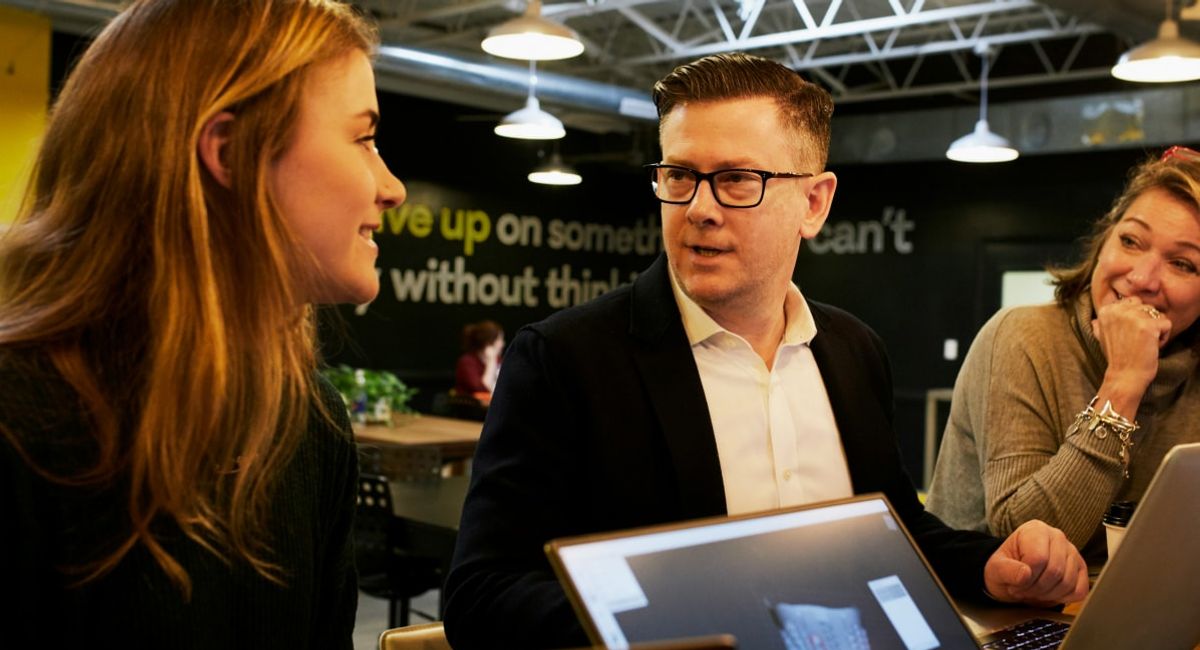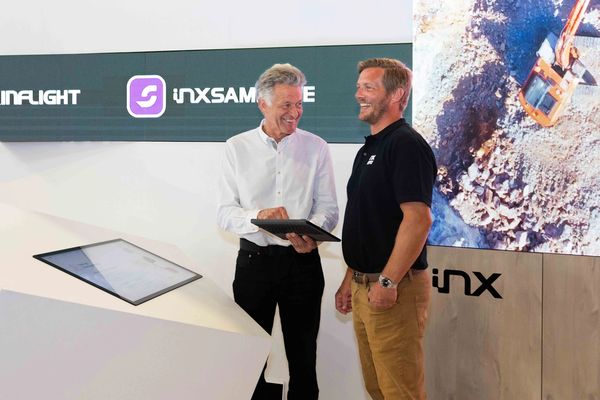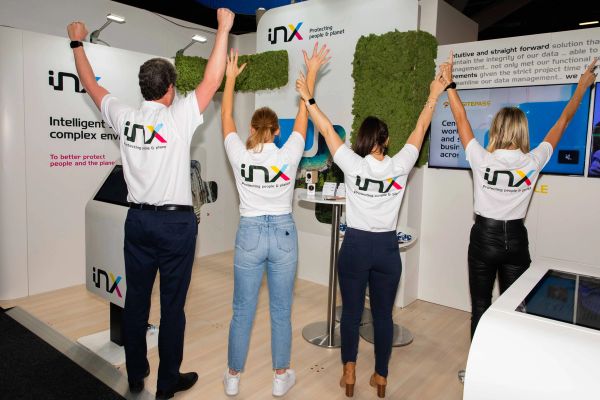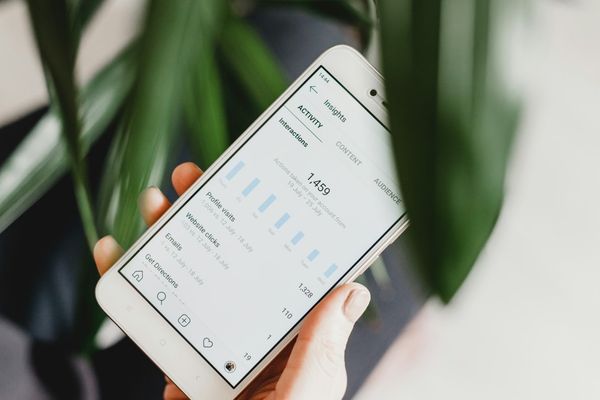Struggling to meet your tradeshow goals? The secret might lie in your staff training. Effective training can transform your team into a dynamic force on the tradeshow floor, significantly boosting your results and their enthusiasm.
This blog explores advanced techniques that go beyond basic training, so you can equip your team to engage more effectively, generate leads and make a memorable impact.
The Importance of Advanced Staff Training
At OSCAR, we truly believe that the key to getting the most out of a tradeshow hinges on how well your team can connect and interact with attendees. Basic training and common sense covers essential booth manners like smiling and warm greetings, but advanced training goes deeper, helping your team really connect with visitors. Well-trained staff can engage in meaningful conversations, demonstrate genuine enthusiasm for your products and adeptly handle various situations on-the-spot .
By stepping up your team's training, you make sure they're not just present, they're active, making solid connections and pushing towards your tradeshow goals.
Core Training Areas for Tradeshow Staff
To help your team excel at a tradeshow, focus on these essential training areas:
Product/Service Knowledge
Ensure every team member is well-versed in the products or services you're showcasing. This includes understanding:
- Detailed product features and technical specifications
- Likely FAQ and how to answer them
- Any recent updates or innovations
- Competitive comparisons and unique selling points
Communication Skills
Beyond knowing the business, staff must effectively communicate their knowledge. Equip your staff with:
- Clear explanations and engaging demos
- Strategies for engaging and maintaining visitor interest - Arm your team with qualifying questions and an elevator pitch so they are consistent in representing the business.
- Techniques for managing difficult questions or situations
- Ways of handling objections and transitioning conversations towards sales
Behavioural Expectations
Set clear expectations on professional behaviour that reflects your brand's values. At a minimum, your team should:
- Be polite and attentive throughout the event
- Have appropriate conduct and presentation standards
- Show teamwork and support one another under pressure
- Not use this as an opportunity to socialise with other team members
- Understand the weight of the opportunity of the event for the business
Visitor Engagement Strategies at your booth
Maximising the impact of your booth starts with proactive engagement. Here are key strategies to train your staff so they actively attract and interact with visitors:
Initiate Contact
- Encourage staff not to wait passively but to greet attendees proactively as they show interest or approach the booth. There is a fine line between pouncing on someone and showing interest. It’s a skill that even the best sales people need to practice.
- Use open, welcoming body language to invite interaction.
- Recognise signals that indicate readiness to engage, such as visitors looking at products or holding an item, which are clear invitations for staff to step in.
Dial in to Body Language
Reading body language is an incredibly powerful skill to train your team up on. It has the potential to greatly improve the performance of your stand.
Some tips include:
- Body language is a powerful indicator of visitor interest and comfort. Training your team to interpret these cues can significantly enhance interaction quality.
- Teach staff to maintain open body language - There have been so many occasions where we’ve seen teams grouped together or sitting down behind counters. These are tiny changes that make a huge difference to the likelihood of someone talking to you.and avoid barriers like crossing arms or standing behind counters.
- Encourage staff to adjust their approach based on the visitor’s body language, engaging more deeply when the visitor appears interested and giving space when they show signs of disinterest.
Visitor Experience Focus
- Every interaction should aim to leave a positive impression. Train your staff to tailor conversations to individual visitor interests and needs.Even when redirecting conversations with attendees that may not be your target audience.
- Ensure all visitors feel valued and welcomed. Demonstrations should be interactive and engaging, helping to retain interest and encourage questions.
- It’s crucial to address visitor questions promptly and accurately while gathering on-the-spot feedback to adapt tactics throughout the event. Each team that we have worked with has different team structures, but often we see “hunters” initiating conversation and others dedicated to more in-depth discussions.
Using these strategies and training areas can help your team feel engaged and confident to meet tradeshow objectives, enhancing visitor experience and overall event success.
Case Study: Apple's Approach to Customer Engagement
Apple, the most productive retailer in the USA with each store generating an average of $40.3 million in annual revenue, exemplifies the power of effective staff training and customer engagement.
Here’s how their strategies can inspire better practices at your tradeshow booth:
- Guided Customer Journey: Visitors are greeted upon entry, guided through their shopping experience by knowledgeable staff, and directed efficiently to checkout when ready.
- Empowerment to Resolve: Each staff member has the authority and training to address and resolve customer issues on the spot.
- Tactile product interaction: Customers can handle and test products freely, enhancing engagement and increasing the likelihood of a purchase.
- Streamlined checkout processes: You rarely have to wait at the Apple Store.The checkout process is quick and seamless, with transactions often completed on the spot in-store.
Apple is a perfect example of how focusing on training and customer care can transform the effectiveness of your tradeshow team.
Implementing Continuous Improvement
Here’s something that most tradeshow consultants won’t tell you: your exhibit isn’t static and you can change your tactics as often as you like. In fact, we encourage it! Being flexible allows you to quickly identify what captures the attention of attendees and what falls flat, so you can adjust your approach in real-time to avoid inefficiency.
Here’s some ways you can experiment at your next event:
- Evaluate Short Bursts: View your booth as a lab for behavioural experiments. Segment the day into 15-minute intervals, during which your team can try varying their engagement techniques, pitching methods or body language.
- Examples of Experiments:
- Product Interaction: Encourage team members to hold a product to see if it draws more visitors.
- Questioning Techniques: Test different opening questions to determine which are most effective in engaging passersby.
- Positional Changes: Move around within the booth space to discover the most effective positions for engaging with the crowd.
- Collect Feedback: Collect feedback from both staff and attendees during the tradeshow. Use this feedback to refine your approach.
- Celebrate and Learn: Take time to acknowledge what went well and discuss less successful aspects with your team.
By incorporating these steps, your tradeshow team’s training and performance will continuously evolve, driven by real-time learning.
Your tradeshow’s success rests on your team's training and engagement. By enhancing training and embracing continuous improvement, your staff can significantly boost your event outcomes, and have a more personally positive tradeshow experience.
GET IN TOUCH
Did you know we provide advanced staff training as part of our Action service?. Contact us today to find out how we can provide a tailored training solution for your team’s next tradeshow.



